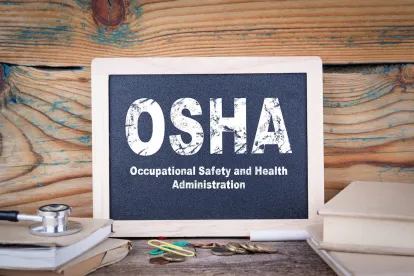Last week, OSHA issued guidance on preparing workplaces for COVID-19. The guidance provides recommendations to help employers plan for the impact of COVID-19 on their businesses, workers, customers, and the public. While a number of states have implemented orders affecting certain workplaces, this guidance remains important for all employers to consider.
The guidance provides a number of recommendations applicable to all employers. First and foremost, OSHA recommends that employers develop an infectious disease preparedness and response plan if they don’t have one already. The plan should consider occupational exposure, non-occupational risk factors, individual risk factors of workers, and controls necessary to address the identified risks. The plan should include basic hygiene and infection control practices, policies for identifying and isolating sick employees, and the implementation of flexible policies to accommodate sick employees and their family members.
OSHA developed an Occupational Risk Pyramid to try to help employers determine if there is a very high, high, medium, or lower risk of exposure in their workplace. High risk jobs tend to be in the medical, laboratory, and morgue fields. Medium risk jobs require frequent close contact with people, but have no obvious connection to COVID-19 (schools, high-volume retail). Lower risk exposure jobs are ones that do not require frequent close contact and have no suspicion of exposure to COVID-19.
Some of OSHA’s recommendations are broken down by the risk categories defined in the Occupational Risk Pyramid. For the high and very high risk categories, OSHA recommends engineering controls, like appropriate air handling systems, PPE, and administrative controls, such as enhanced medical monitoring, training, signage, and psychological and behavioral support.
For the lower risk category, engineering controls and PPE are not recommended. Instead, OSHA recommends that lower risk employers monitor public health communications about COVID-19 and ensure that employees have access to that information. Lower risk employers should also collaborate with workers to determine and implement an effective plan for communicating COVID-19 risks to employers.
In the medium risk category, the recommendations leave a bit more to the employer’s discretion. These employers should consider offering face masks or shields to ill employees and customers until they are able to leave the workplace. They should also limit or restrict customer and public access to the workplace where appropriate, and consider ways to minimize face-to-face contact, such as telephone communication or remote work.
While there is no specific standard governing COVID-19 exposure, in the guidance, OSHA references both the Personal Protective Equipment (PPE) standard and the General Duty Clause as potentially applicable requirements for preventing occupational exposure. The guidance is intended to assist employers in providing a safe and healthy workplace, and employers should be familiar with the recommendations and consider whether any of their workplace plans or procedures should be updated.



 />i
/>i

